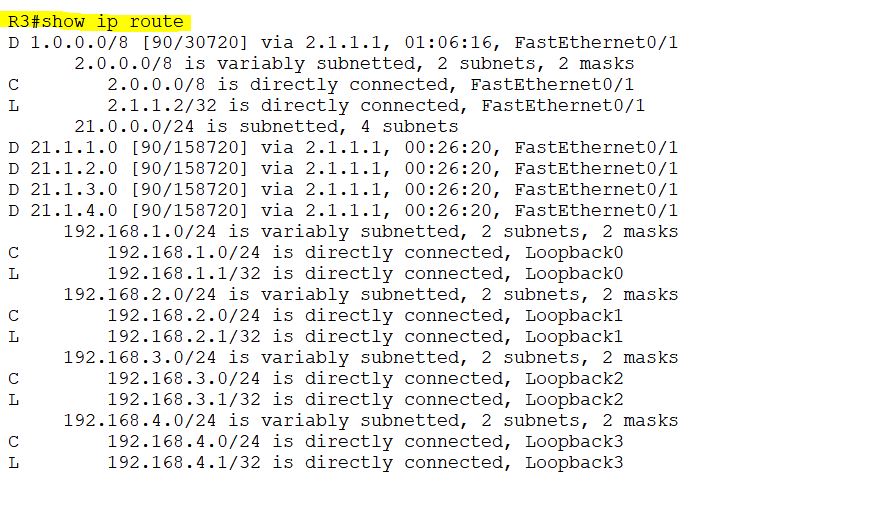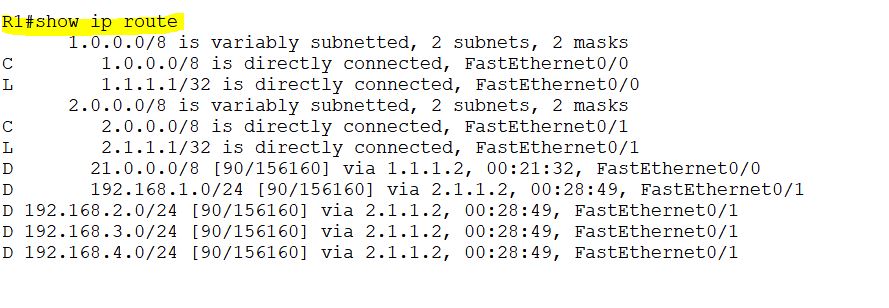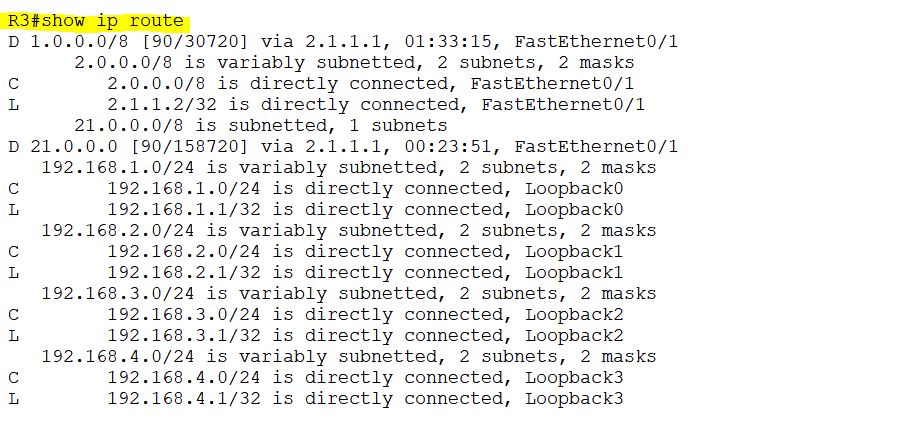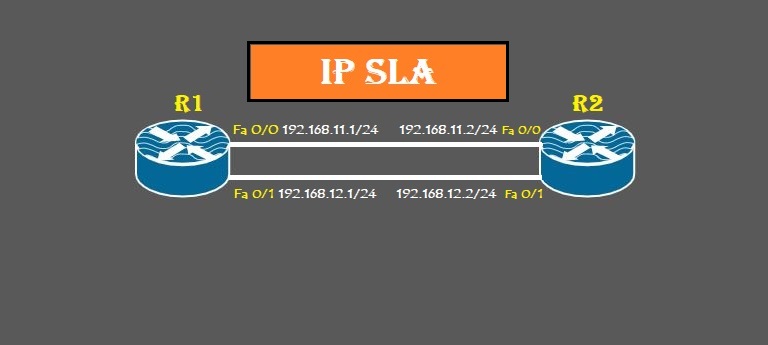EIGRP Route Summarization: How to Implement Via Step-by-Step
Introduction
Summarization is the reverse process of subnetting. It reduces the size of the routing table by combining several routes into one summary route. If a network is small, its routing table is fine, but if its size is increasing daily, it is difficult for network engineers to handle it due to its complexity.
EIGRP route summarization
In route summarization, we represent different networks as one network. We usually use route summarization when the routing table is large. However, In EIGRP, there are two different types of route summarization:
- Automatic summarization
- Manual Route Summarization
The router automatically summarises routes in Auto-Summary, but this method is not used nowadays, especially in Cisco IOS version 15.0—Cisco has made it obsolete. You can disable auto-summarization in EIGRP by using the “no auto-summary” command, but if you want to enable it, then run the “auto-summary” command.
Similarly, in the manual route summarization, we create our summary of routes and can send it at the interface level as well. For manual summarization, run the “no auto-summary” command.
Lab Scenario for EIGRP Route Summarization
We will use three routers in our network topology. In the below diagram, we will configure auto-summarization on R2 and manual-summarization on R3.
Configuration of routers.
- Configure all the IP addresses on all interfaces.
- Configure four Loopback interfaces on R2 and R3.
- Run the EIGRP with an autonomous system number 1.
- Lastly, advertise all the routes in EIGRP.

Before enabling auto-summary, the routing tables of R1, R2, and R3 are given below one by one.
Similarly, check the routing table of R3.

If we enable auto-summary on R2, then R2 will send a summary route of 21.0.0.0/8 instead of 21.0.0.0/24. 21.0.0.0 The Network will now be sent as a classful network.
Check its confirmation on R1 & R2.

While the routing table of R3.

We will do manual summarization on R3 for loopback interfaces 0, 1, 2 and 3 as,

The total network was 24. Now subtract 3 non-matching bits from 24 as = 24 -3 = 21, So the remaining bits are 21, which will be the subnet mask of network 192.168.1.0 as 192.168.1.0/21
The summary address will be 192.168.0.0/21 or 192.168.0.0 255.255.248.0
Apply manual summarization on interface FastEthernet 0/1 of router R3.
R3(config)#interface FastEthernet 0/1
R3(config-if)#ip summary-address eigrp 1 192.168.0.0 255.255.248.0
Now check the routing tables for R1 and R2 to see the manual summarization on R3. First, check the routing table of R1

The routing table of R1 has been reduced. Now it only receives entries from the 192.168.0.0 network.
Let’s check on R2.






